In KSP Interstellar, thermal and electric rockets run on power–but producing power with a fission reactor (at least, with the technology accessible early in the tech tree) is frustrated by the high mass of the reactor and electric generator. We can beam power via microwaves, but early experiments revealed that moderately sized orbital fission reactors were not capable of producing sufficient power. We needed more. Lots more.
Solar panels collect energy from the sun; they’re lightweight and inexhaustible, but produce very little power compared to a full-size reactor. Moreover, their power falls off with the inverse square of distance to the sun, making them less effective for outer-planetary exploration.
Wait a second.
Solar panels produce way more power when you’re close to the sun. We can put a massive photovoltaic array in low solar orbit, collect metric fuckwatts of solar energy, and beam that via focused microwave to anywhere in the system.
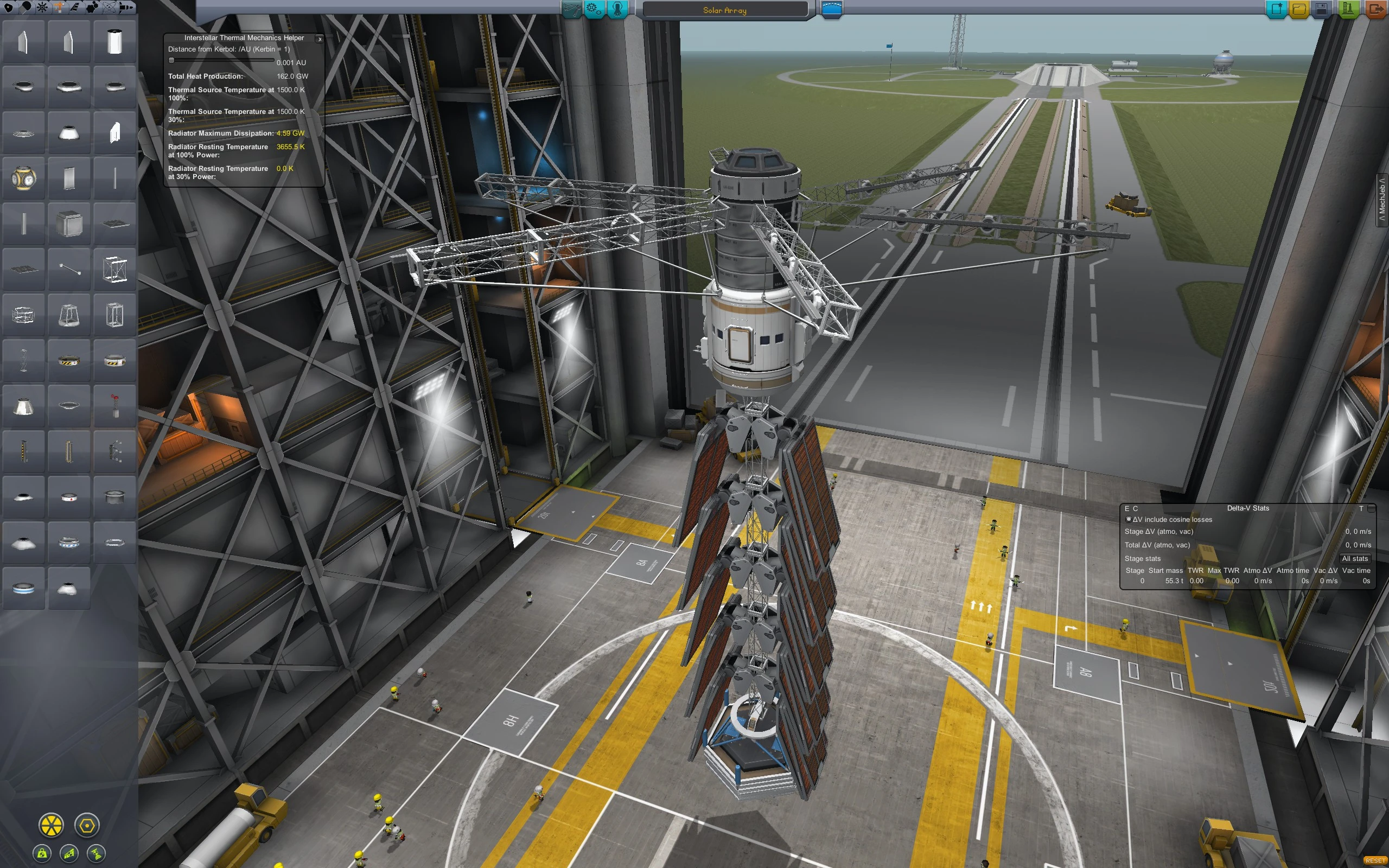
This was the first prototype solar power station. At the top are trusses which solar panels unfurl from. We need a long tree of radiators to dissipate the immense heat from low solar orbit. At the base is a microwave antenna to beam power to the rest of the system. There’s even a small crew hab in the middle, and a cupola for extreme suntanning.
The launch vehicle is about what you’d expect.
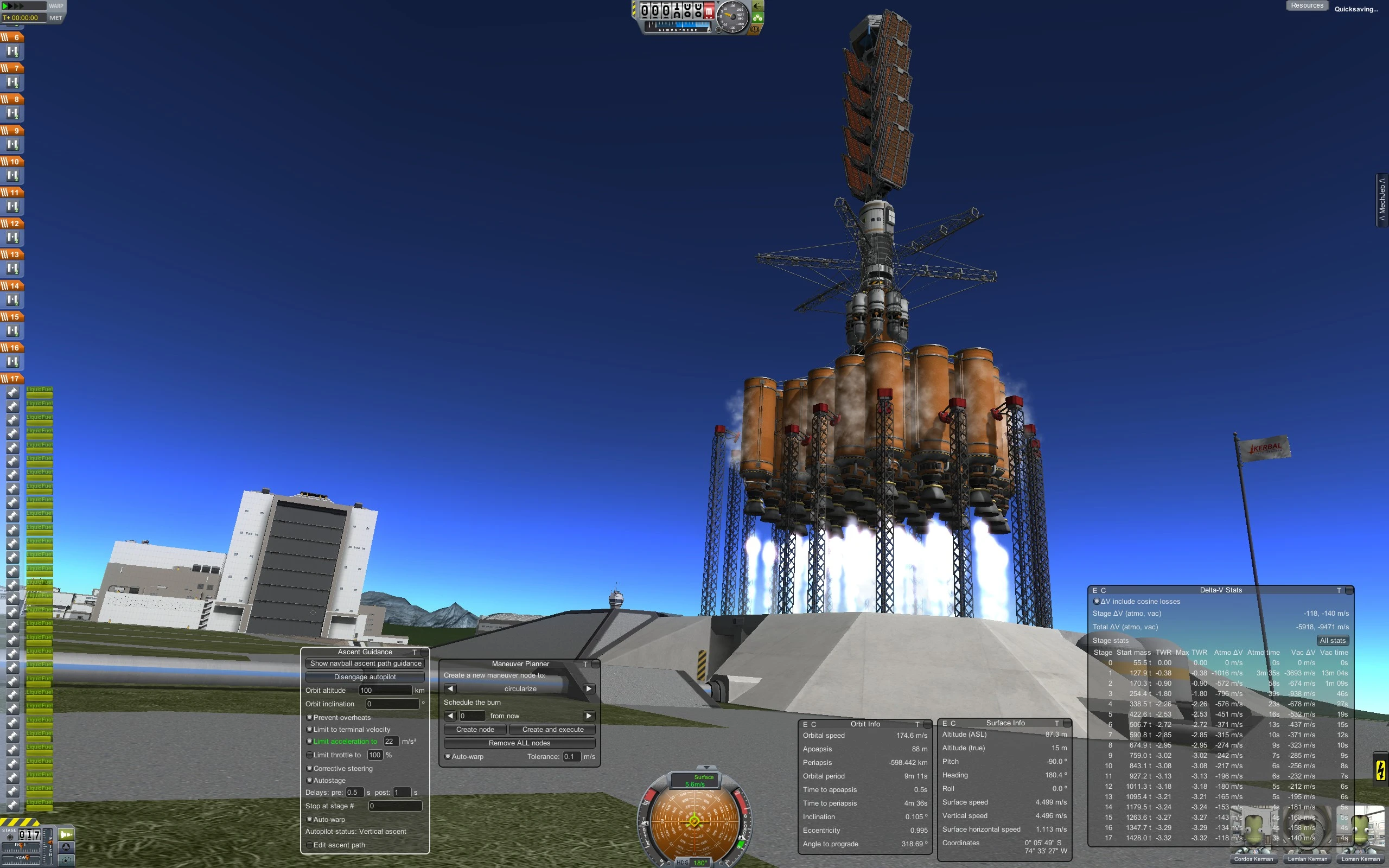
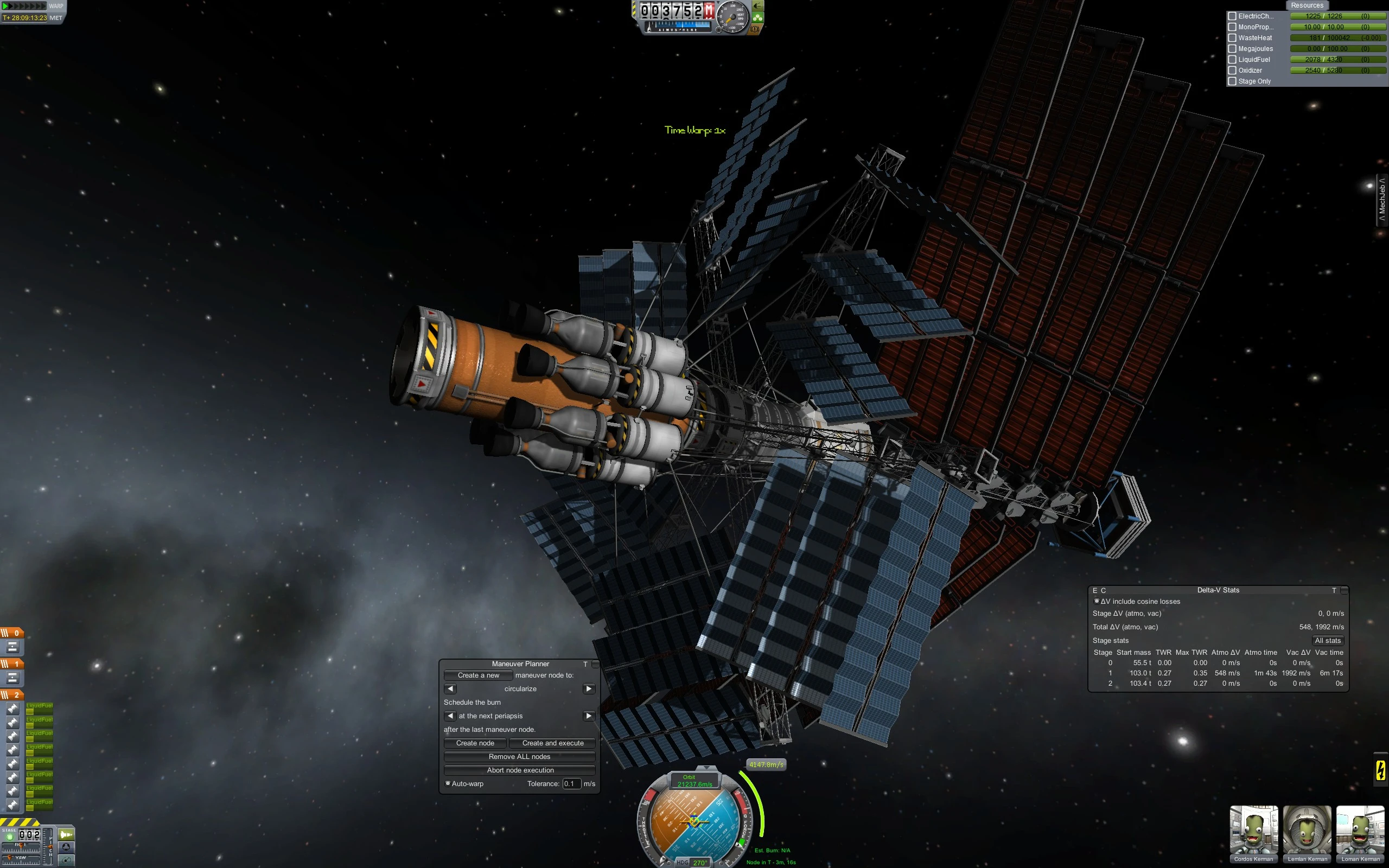
Once out of atmo, solar panels and radiators unfurl, and a stock nuclear engine pack transfers the station to solar orbit.
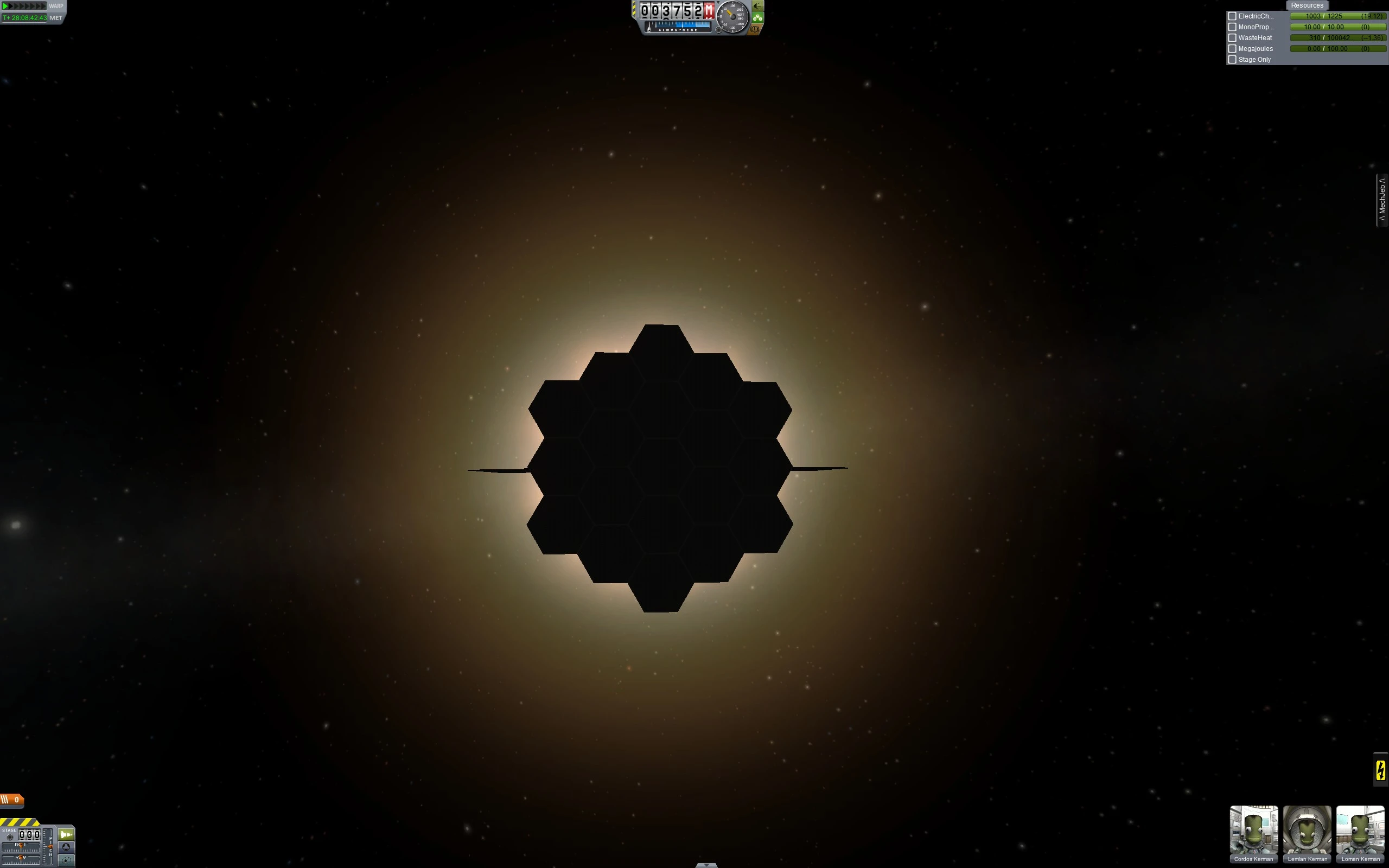
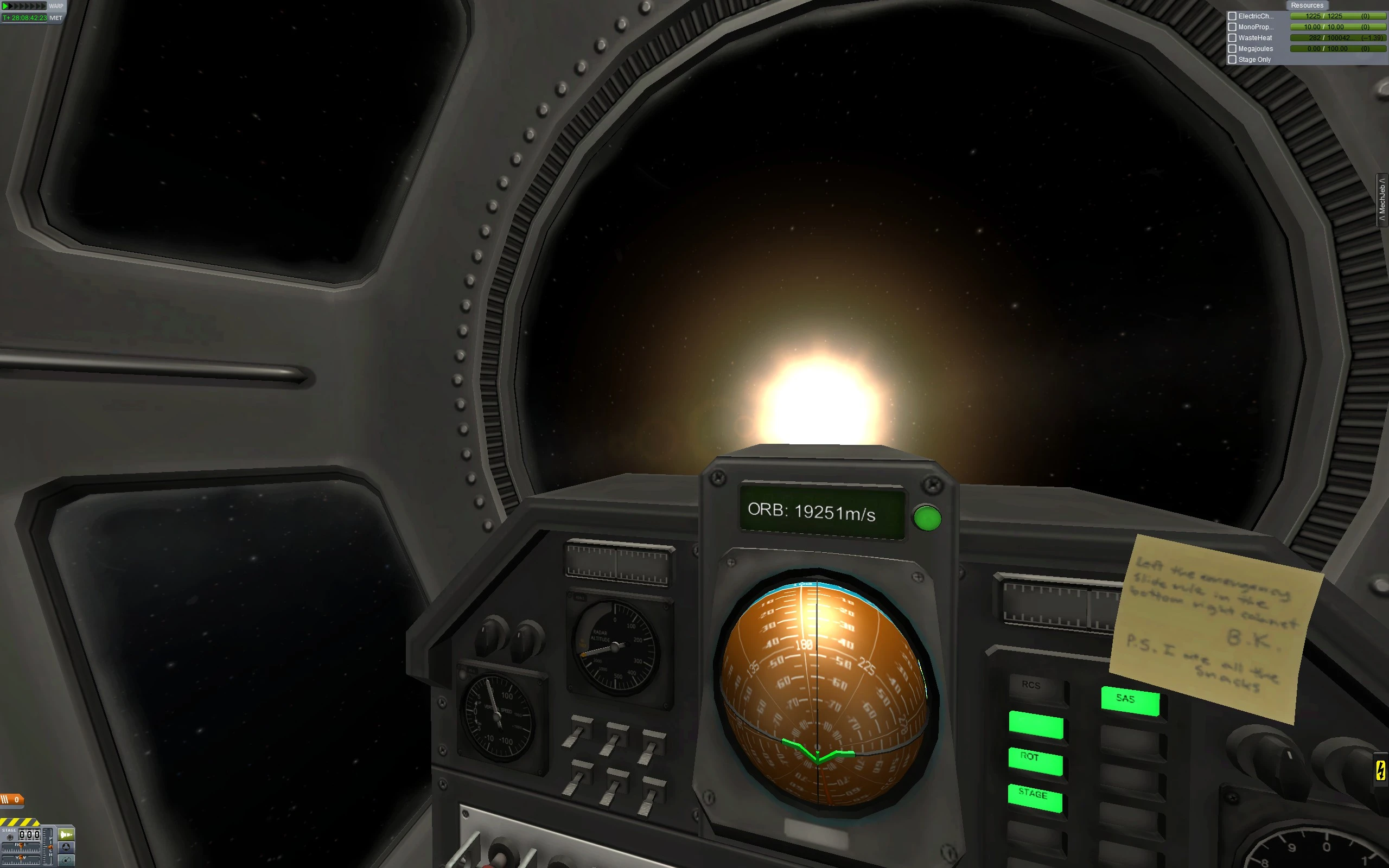
We were only able to deliver the station to a fairly high solar orbit, but it still produces ~3.5 megawatts of microwave energy. A tiny ion-engine craft, released from a standard launch vehicle, can draw enough microwave energy through its parabolic antennae for ~2588 m/s of delta-v (specific impulse varies with available power), but with an essentially useless thrust-to-weight ratio.
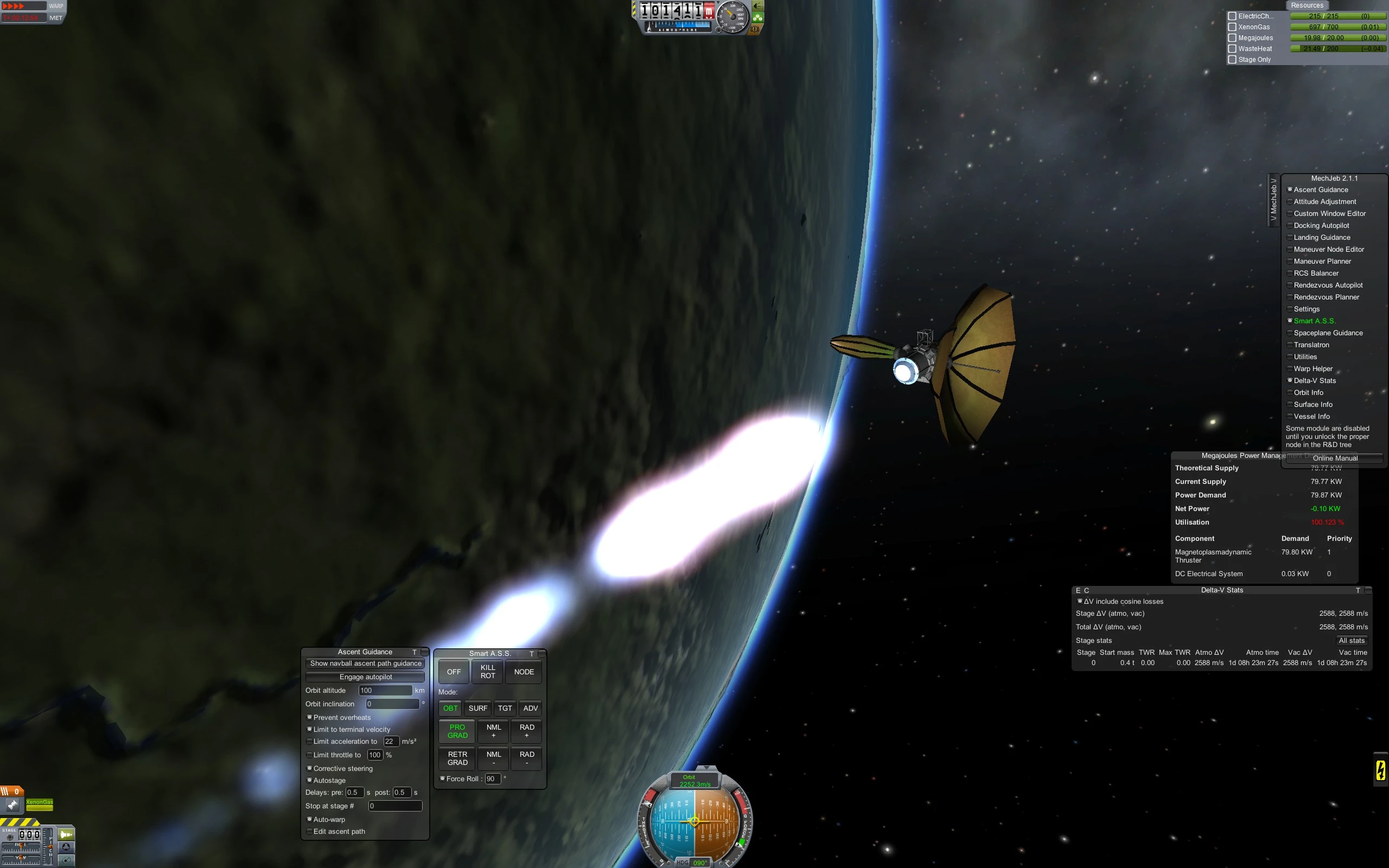
We need more power.
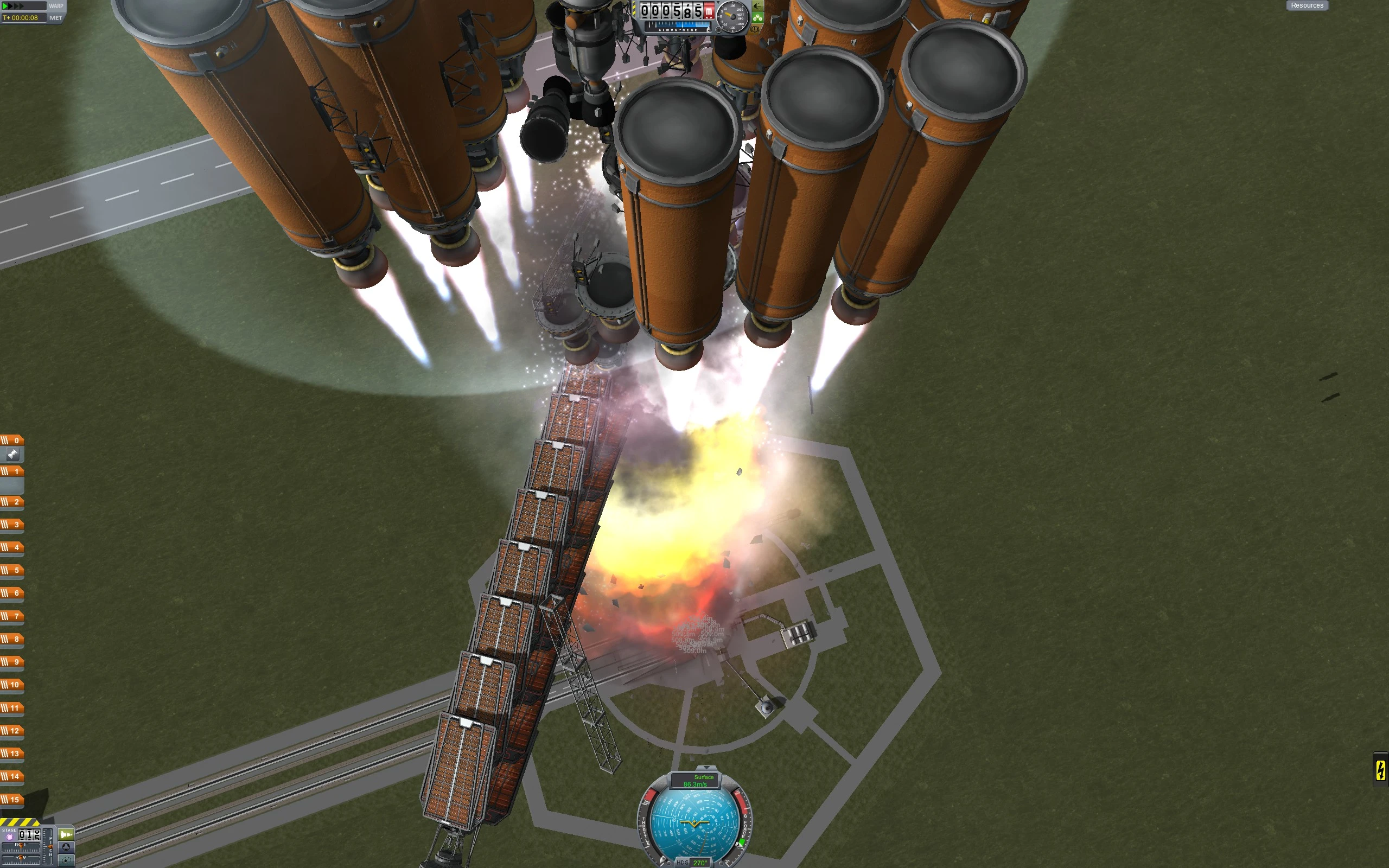
More struts, too.
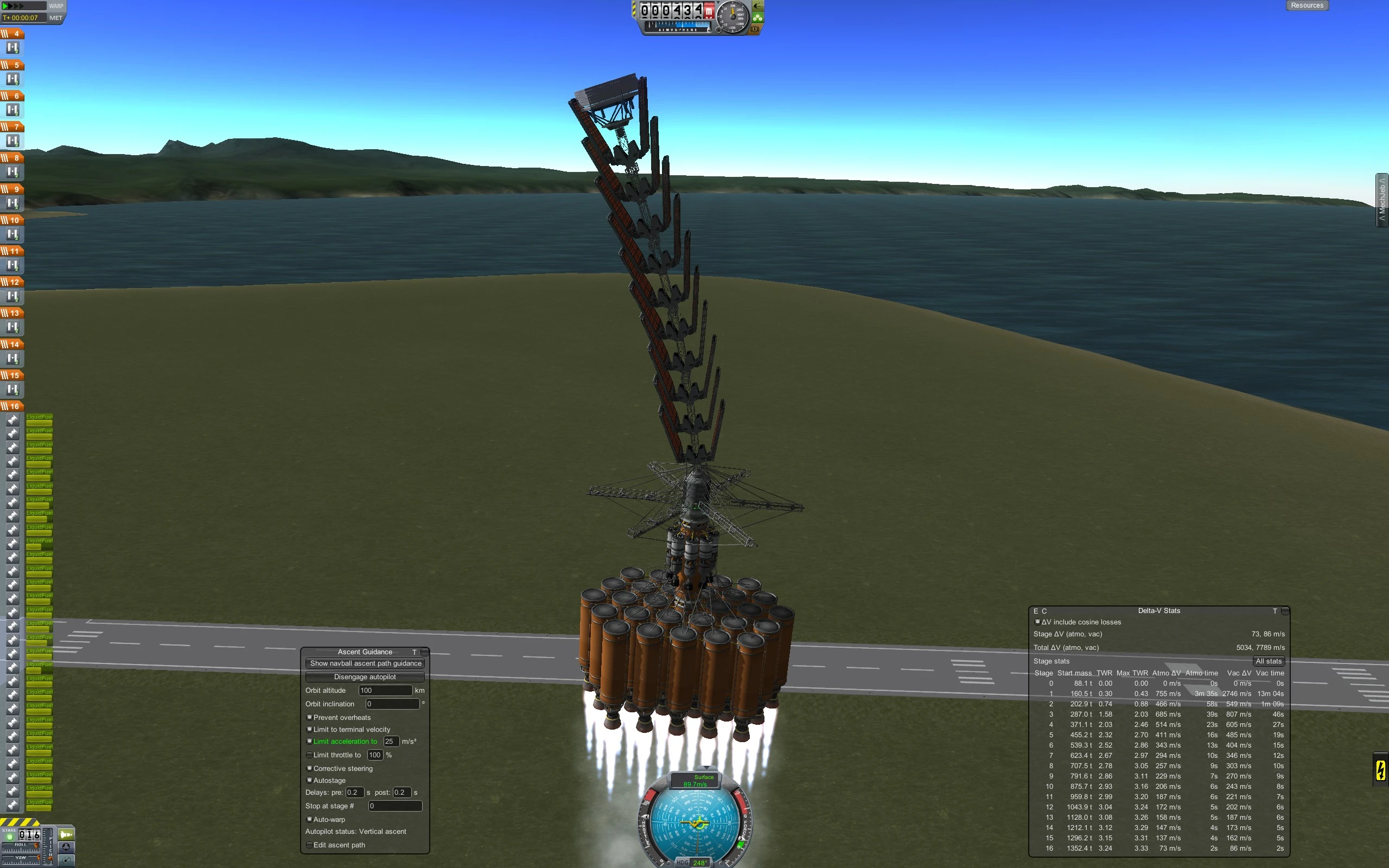
This was the most difficult launch I’ve ever attempted. The spine of the station has many joints, so the whole assembly wobbles back and forth like a deranged inflatable dancing-man, like the ones that advertise used car sales on the side of the road. Autopilot and SAS were useless.
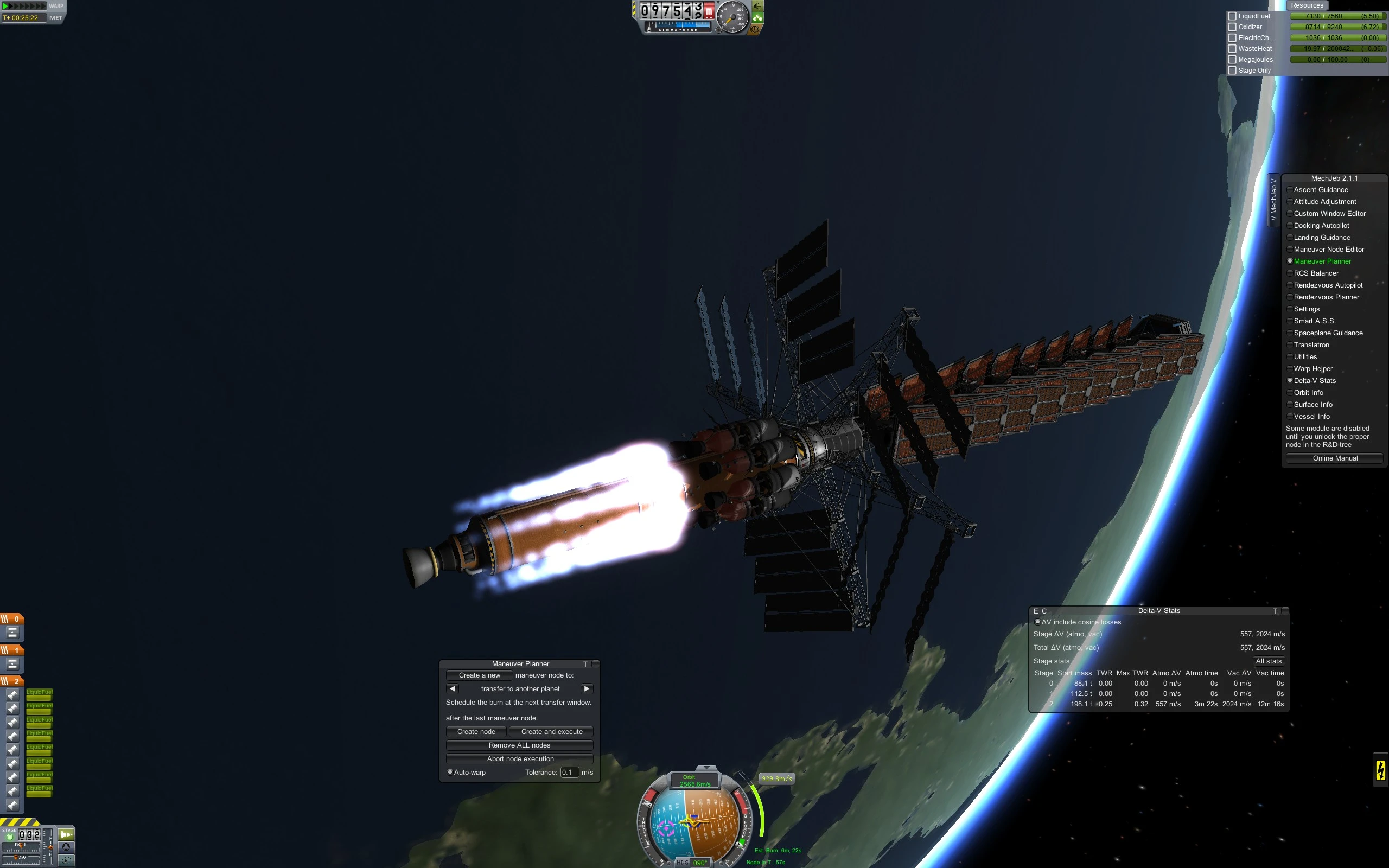
We removed the crew module and observatory to save weight, and added additional radiator and solar panels. The redesign left space for a docking port at the head of the station, so after exhausting the initial NERVA pack’s fuel reserves, we dispatched a second transfer vehicle to drop the station into an even lower orbit.
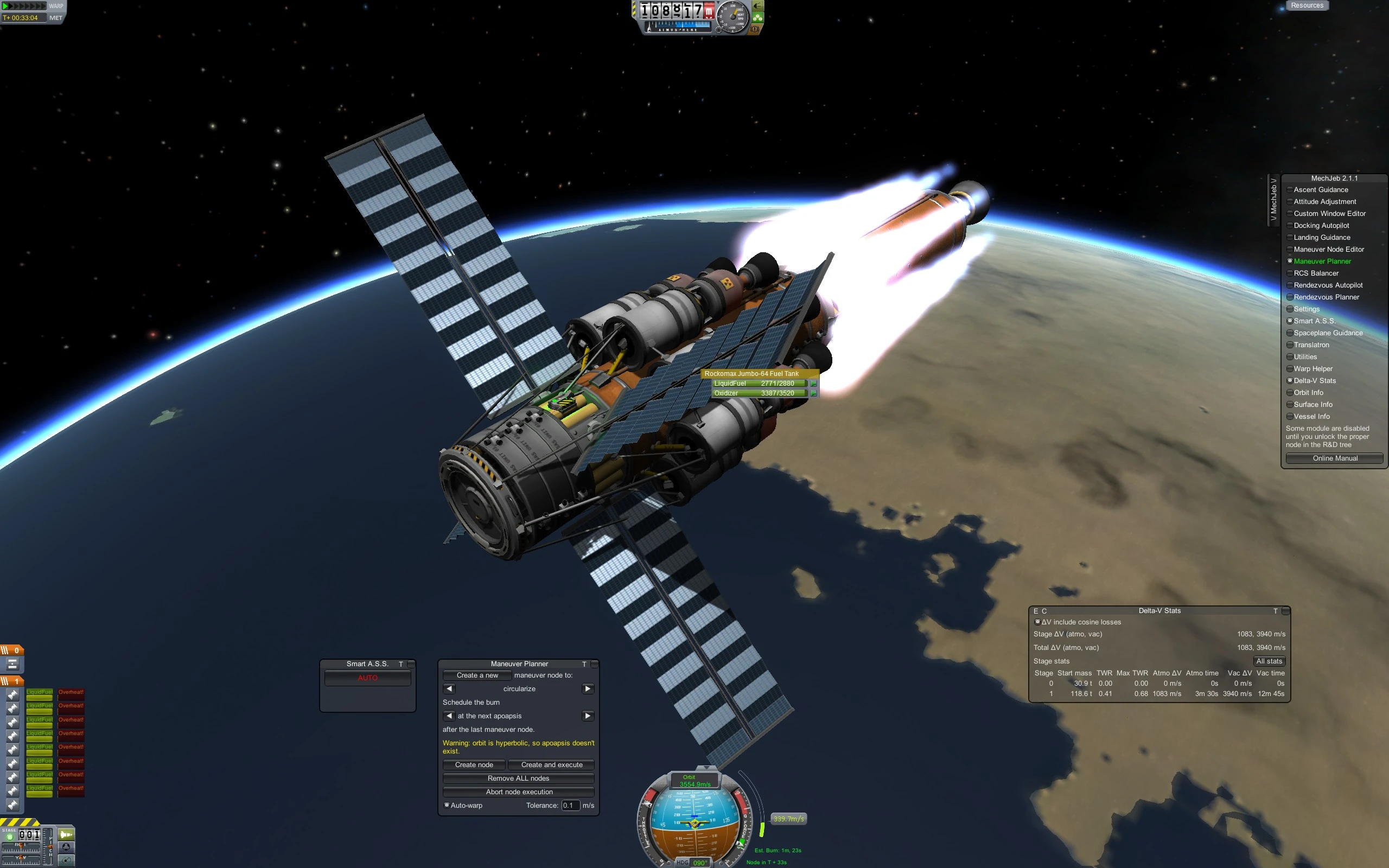
The lower orbit and improved design allowed us to generate significantly more power, allowing us to omit electric generators on new missions. This design retains a uranium-tetraflouride cycle fission reactor powering a thermal rocket, but uses microwave transceivers for power demands.
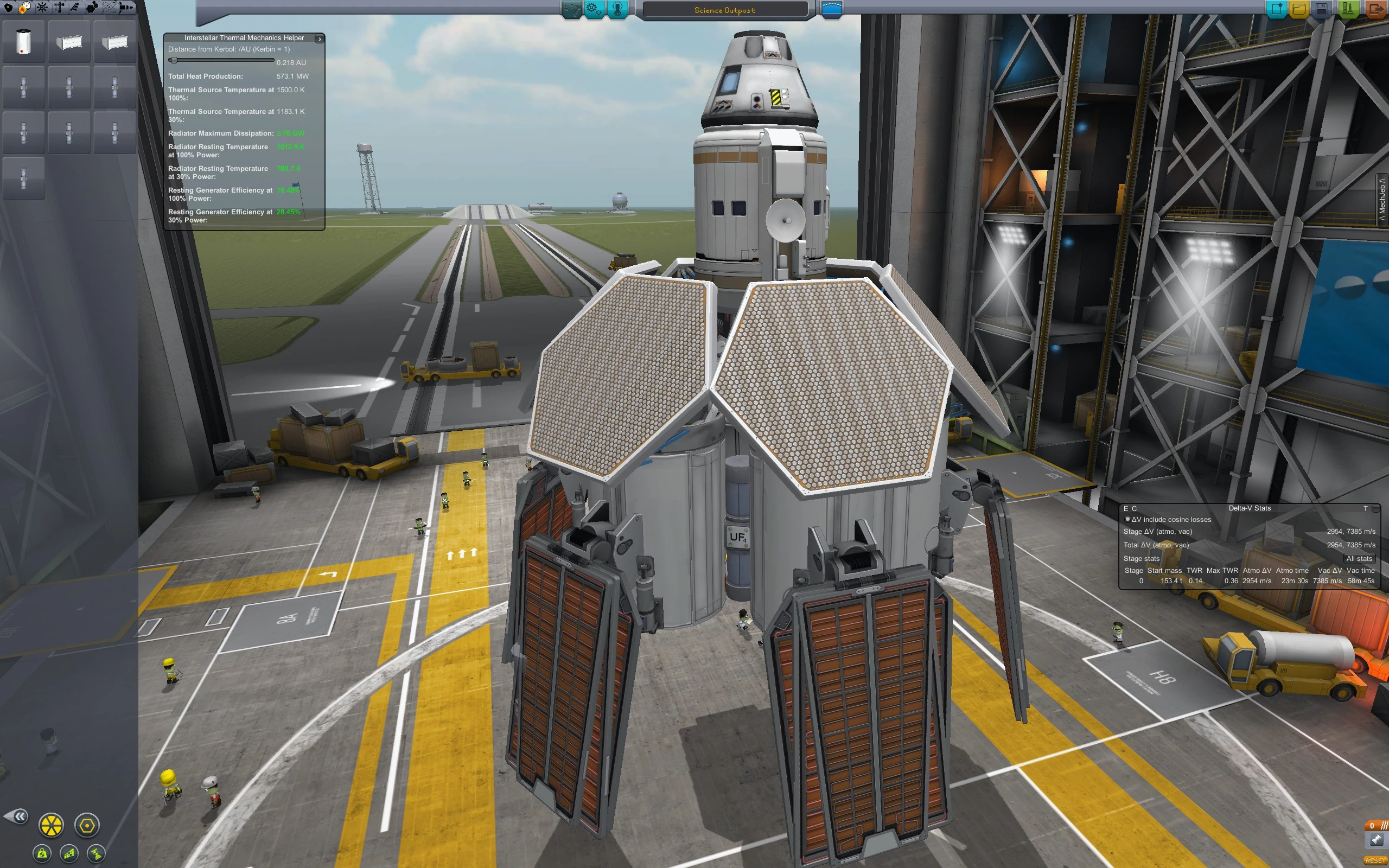
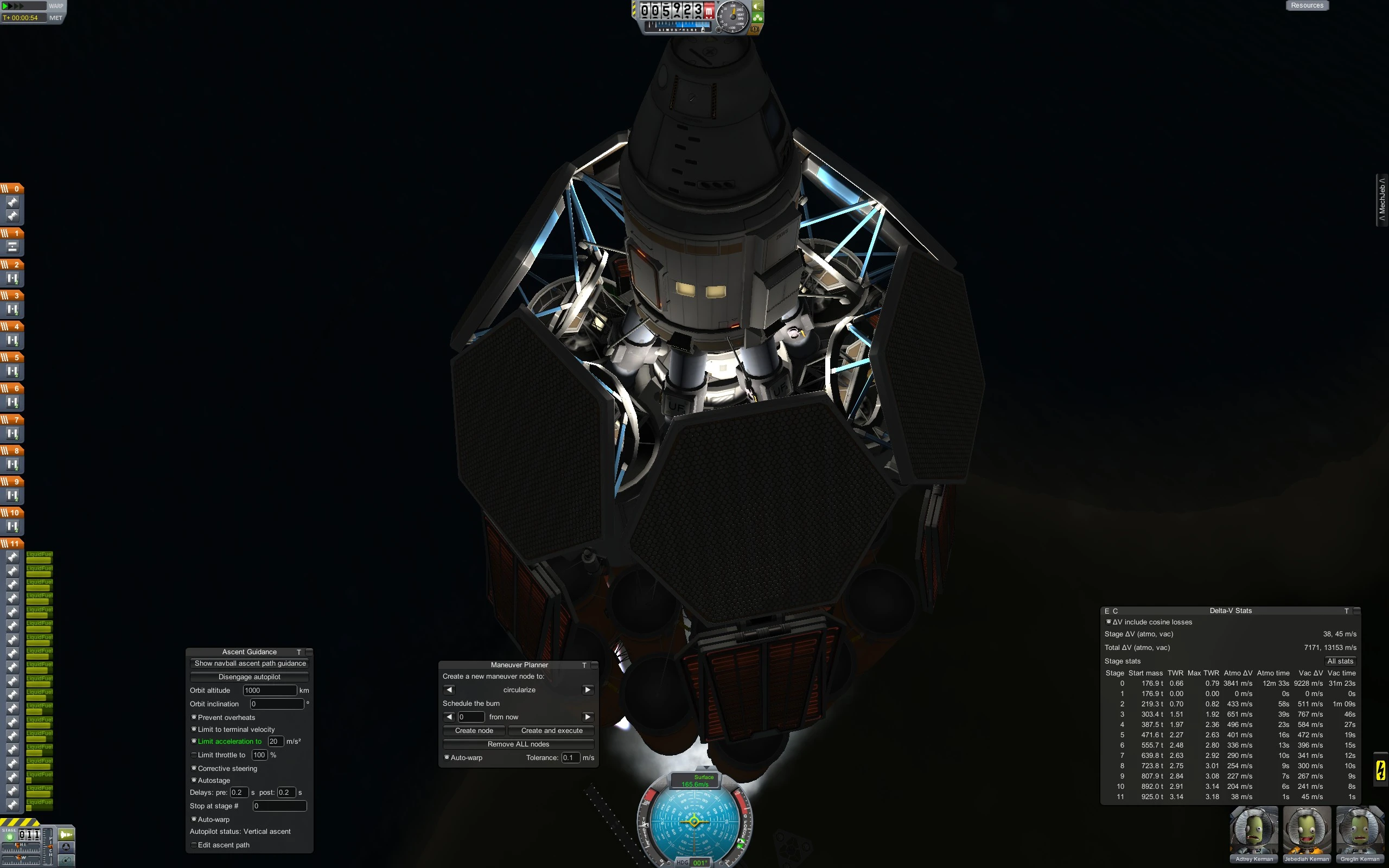
We also used microwave power to run research labs on other planets: critical for developing new and more efficient propulsion technologies.
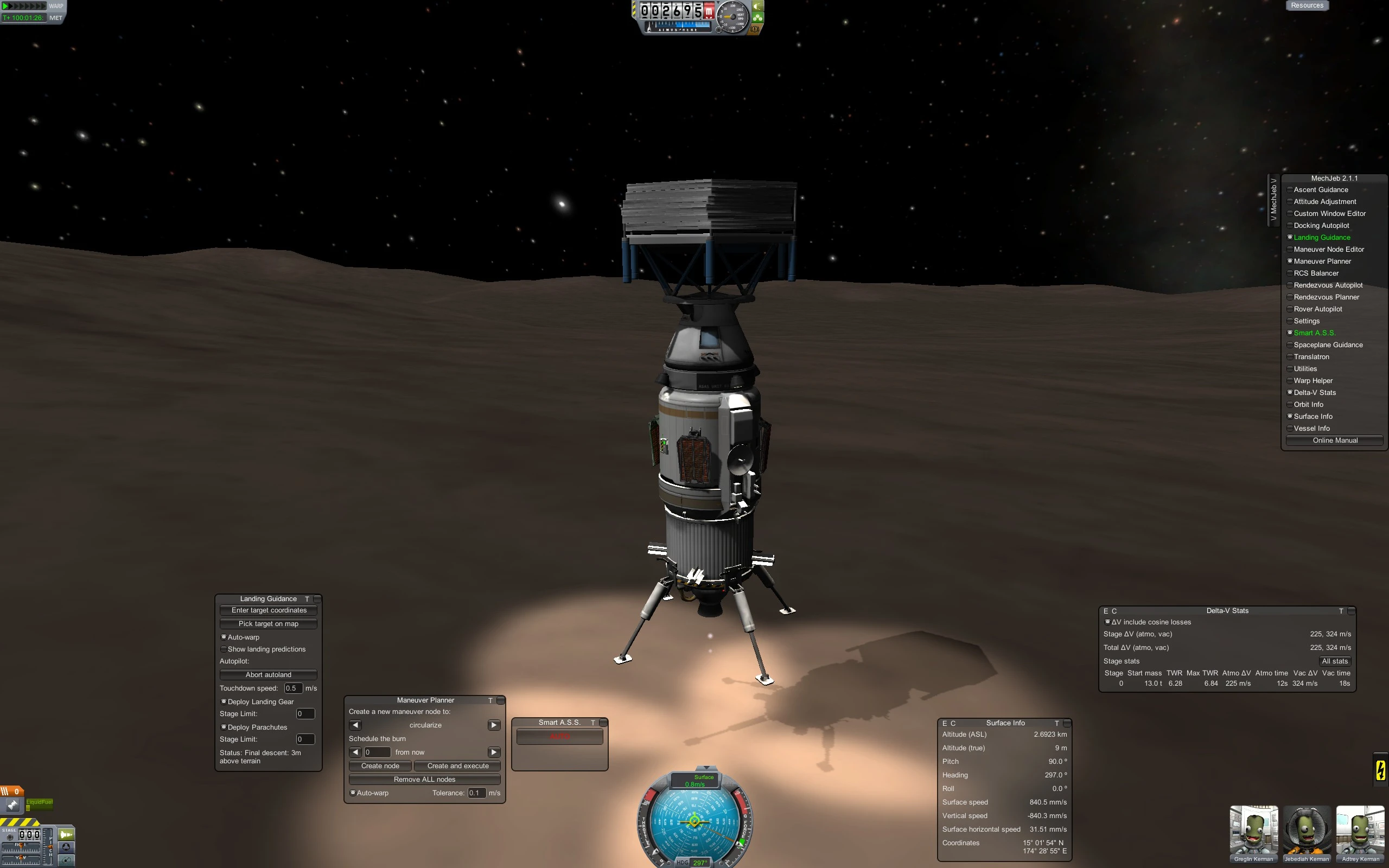
One of those propulsion systems is this inertial fusion engine, which works by throwing out tiny pellets of hydrogen, then using intense laser beams to crush them, creating intense explosions. Due to the radiation this produces, this engine kills any Kerbals within several kilometers. It is, however, fantastically efficient: this single-stage-to-orbit craft has a 1.72 thrust-to-weight ratio, and 33,000 m/s of delta-v. Other people are, quite frankly, overrated.
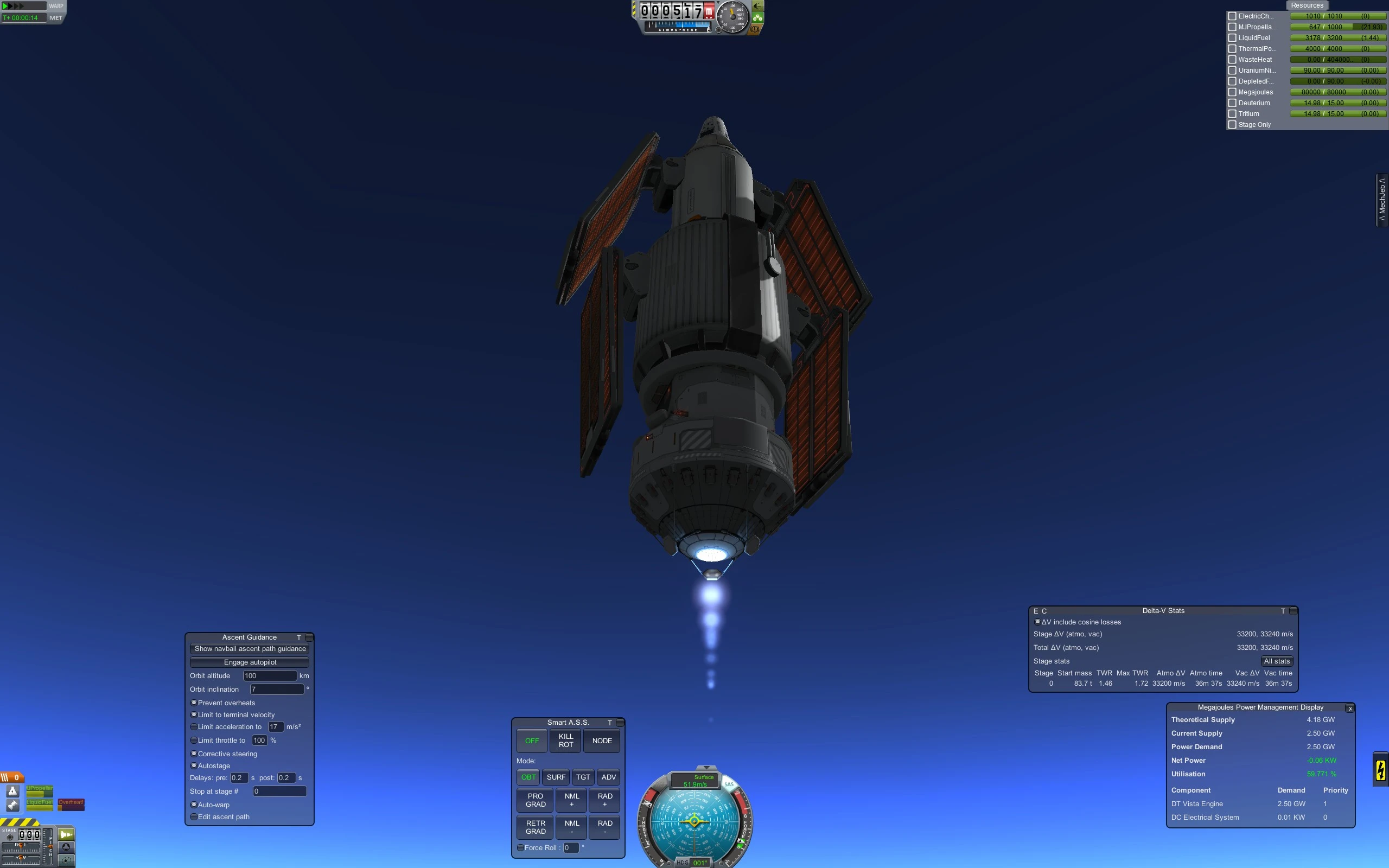
We were able to fly shockingly close to the sun before waste heat started to overwhelm ship systems.
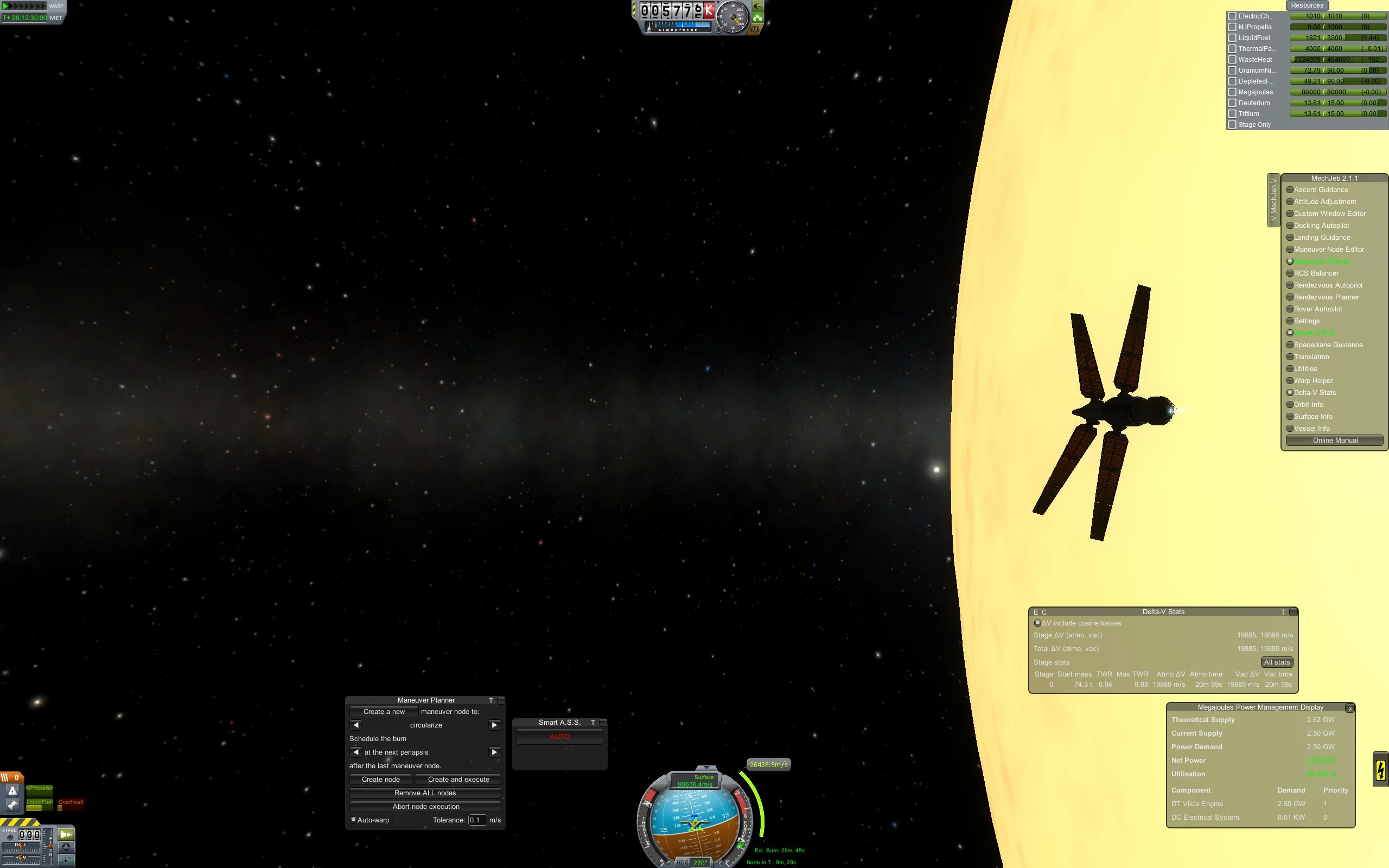
With the technology proven, the obvious next step is to make it seven times bigger. This transfer vehicle was built to dock with our orbital power stations and lower them to a more… interesting orbit.
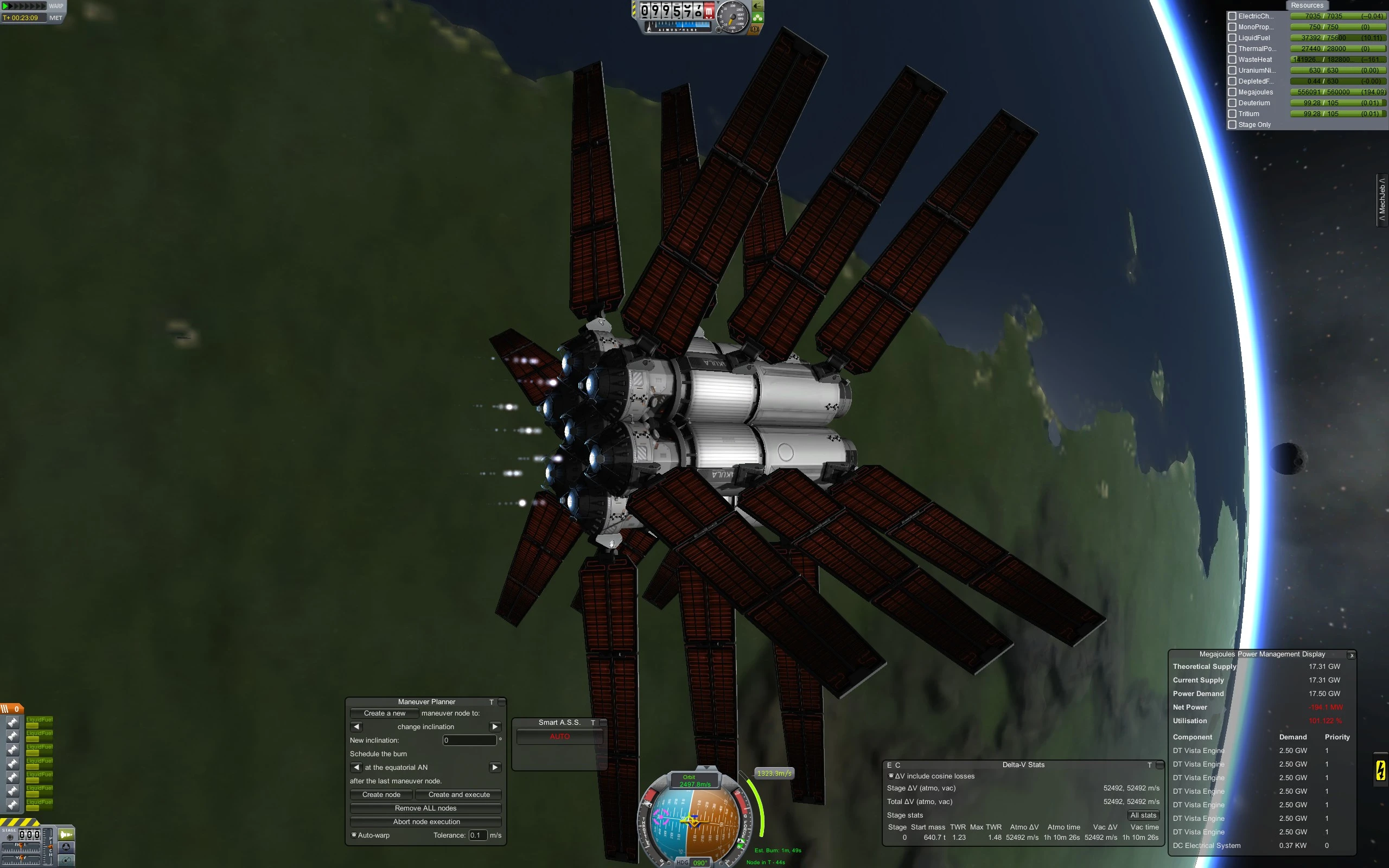
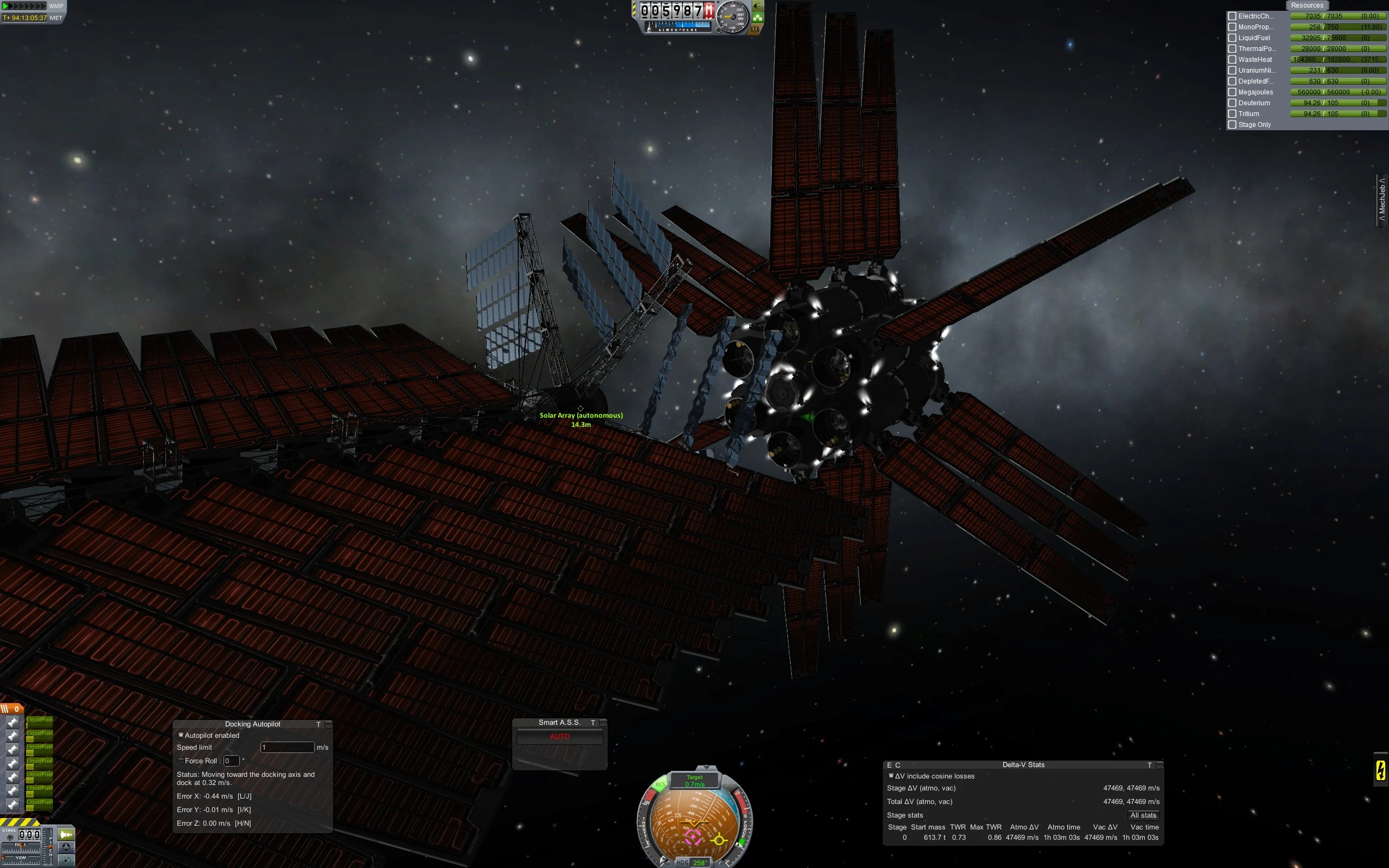
Solar got low, low, low, low, low, low, low, low.
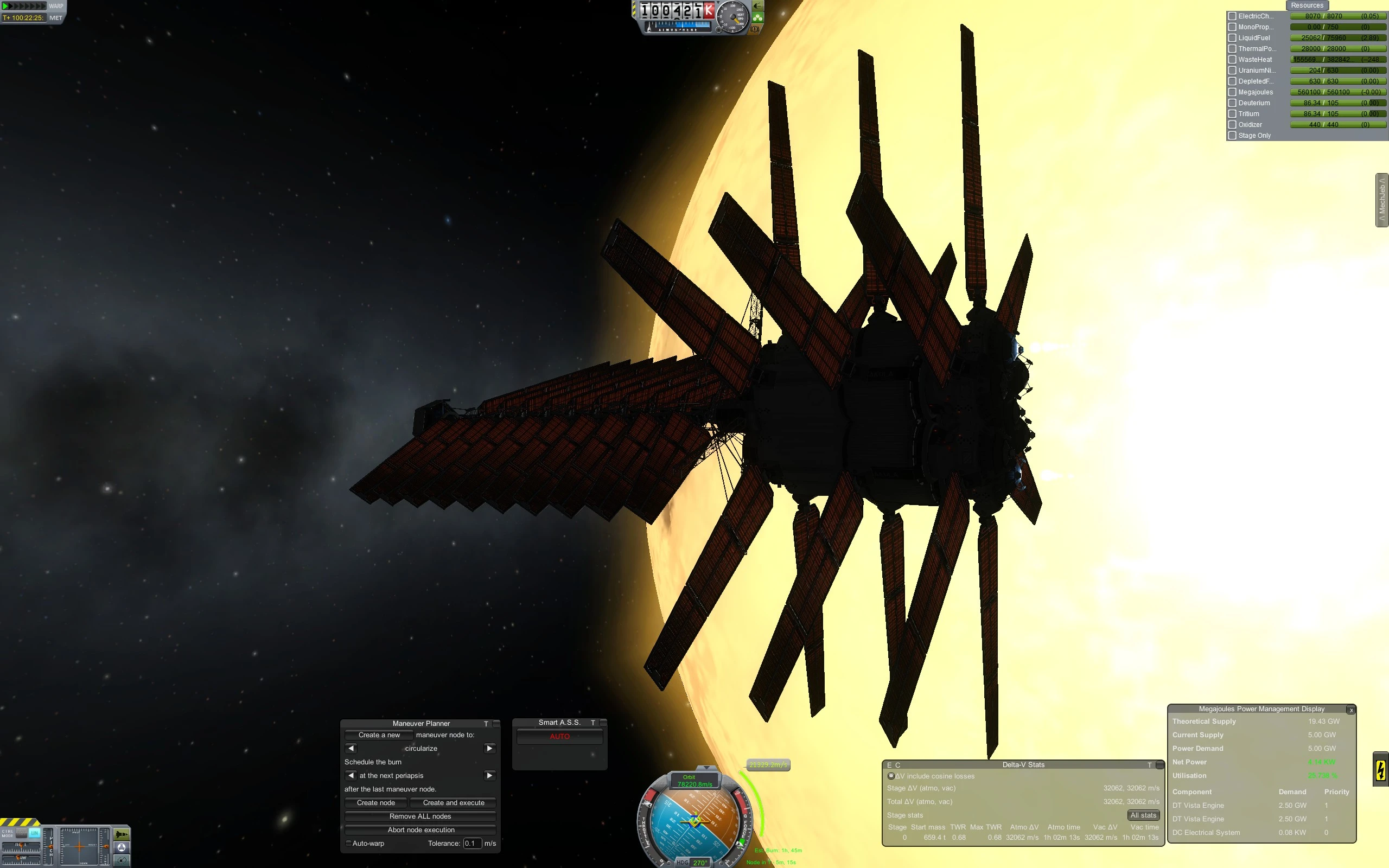
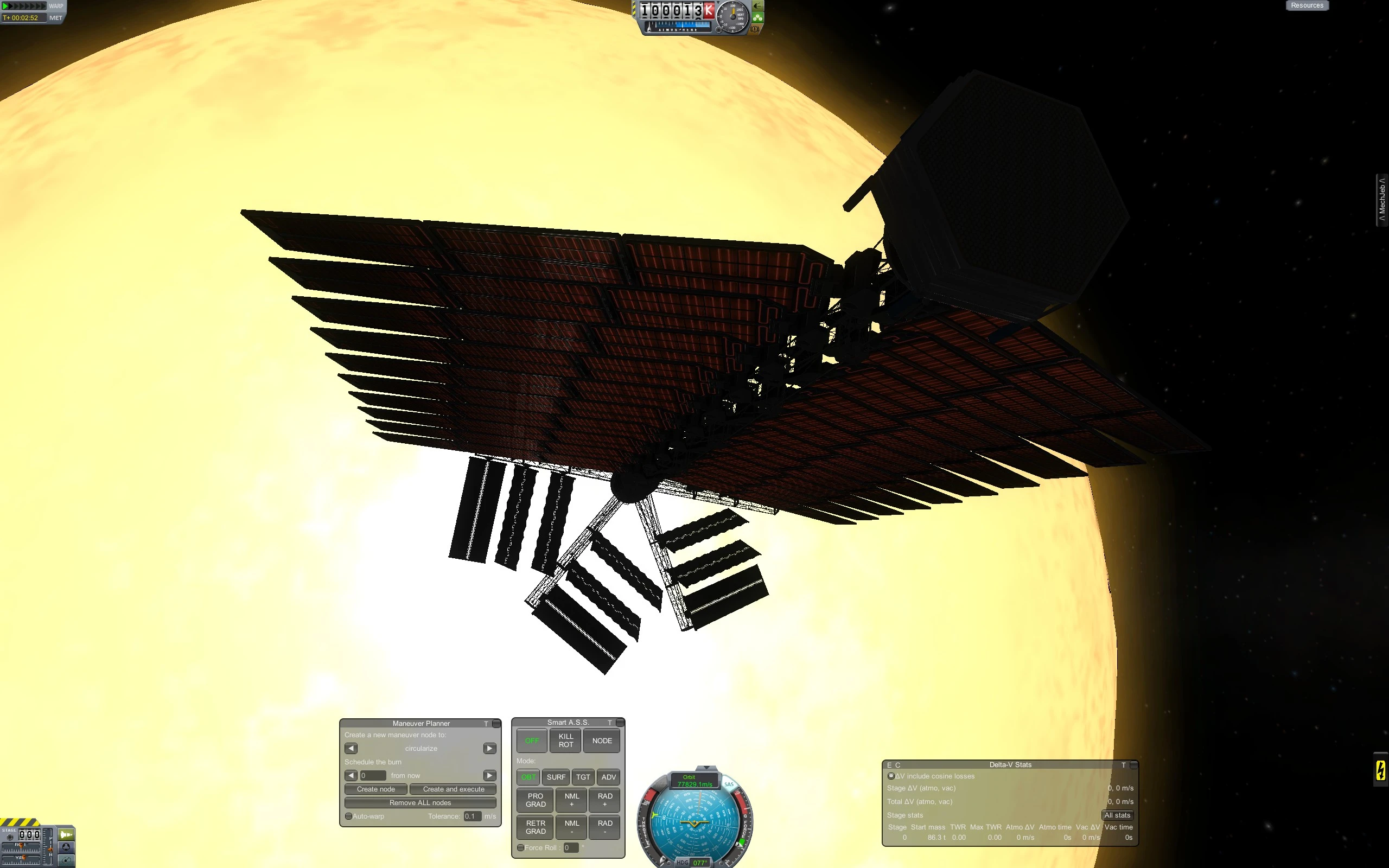
I forget how much power this generates, but it’s… a lot. I built three more for good measure. Of course, this only works when you can see the sun, so we need repeaters. Here’s a silly-looking one.
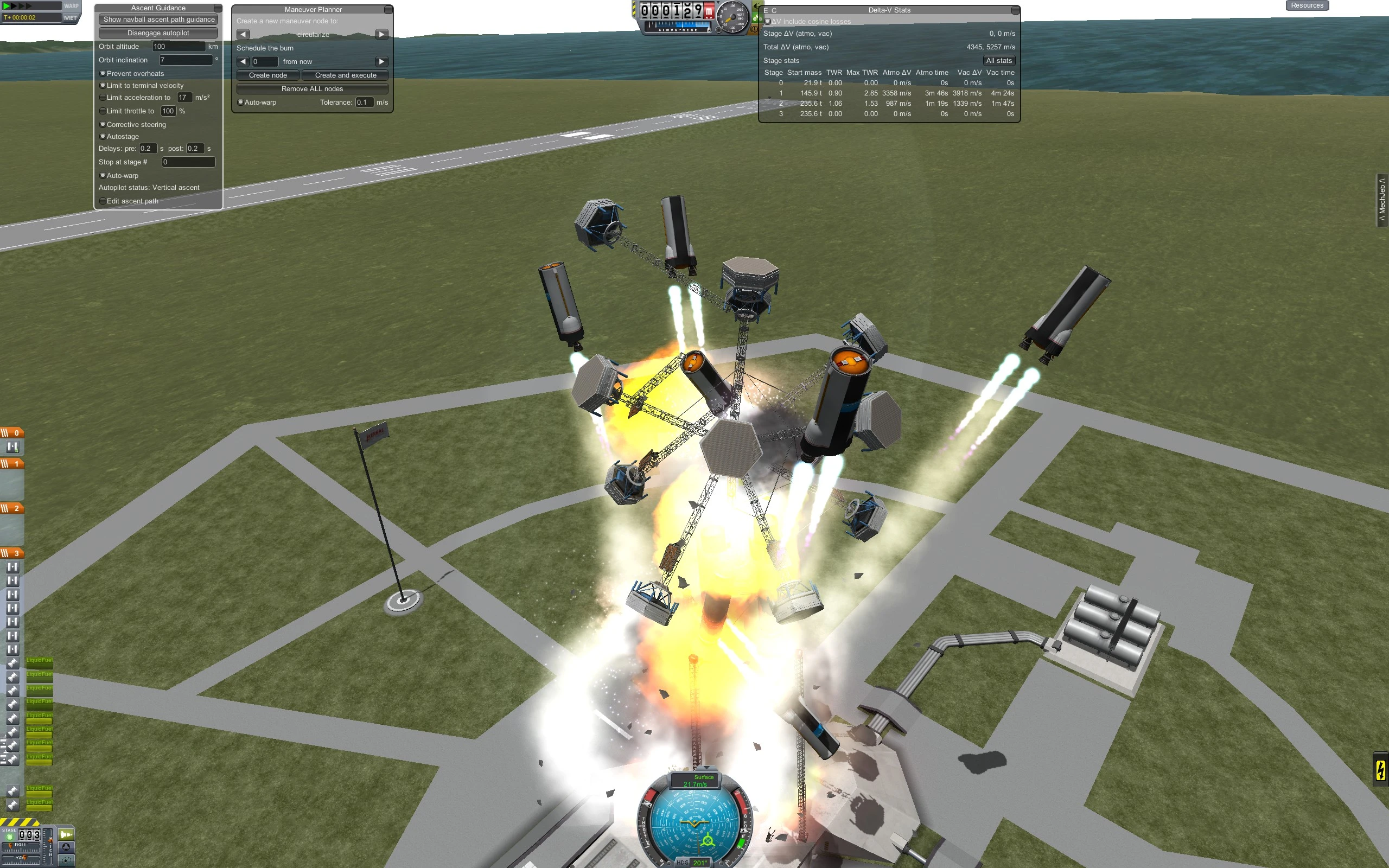
All of this enabled us to build some very cool ships, such as this deep-space infra-red observatory, shown here on its 90-year elliptical arc to the outer edge of the solar system.
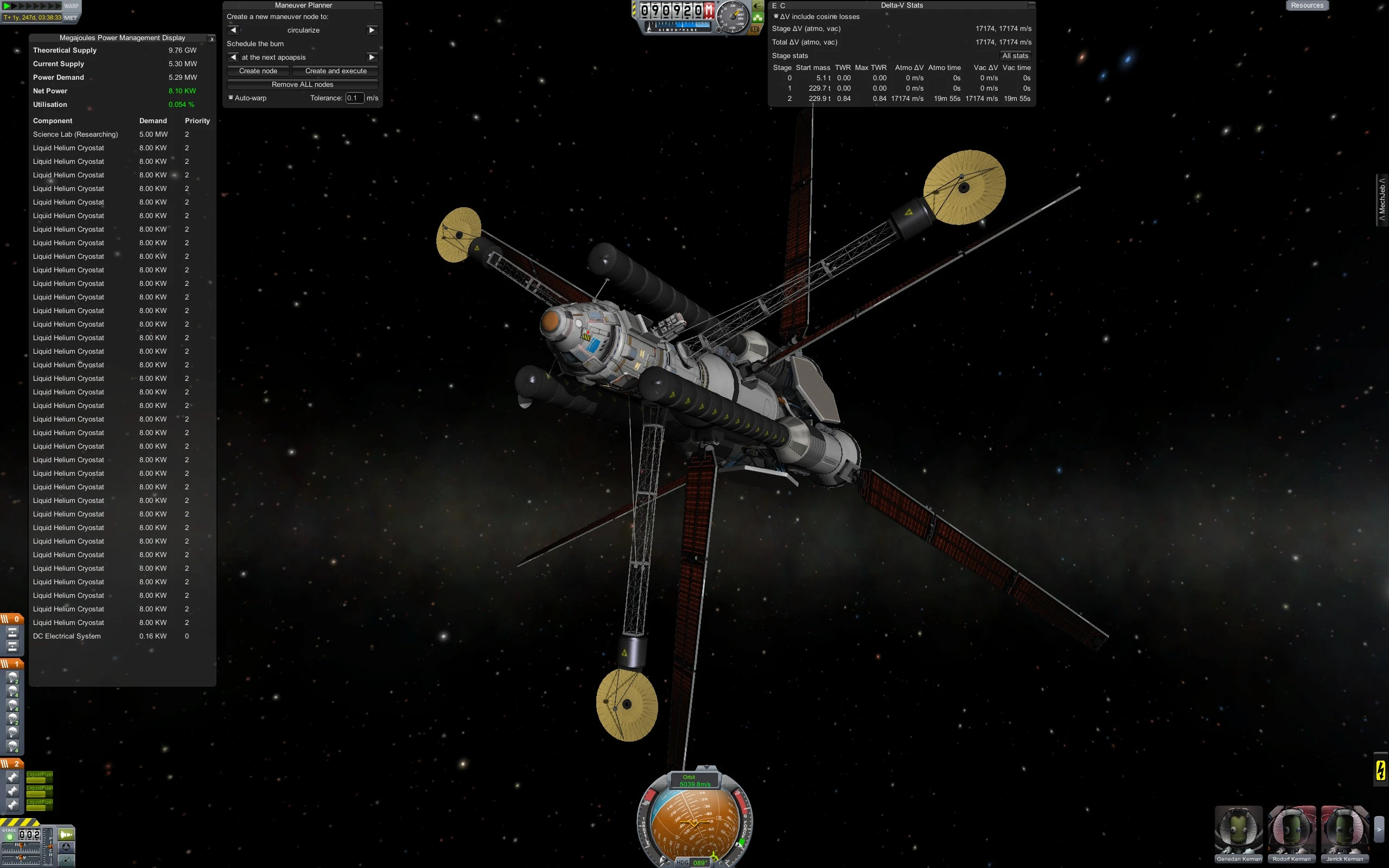
Come to think of it, it’s still out there. I wonder if they remembered to pack snacks…
TIL you can build the Icarus Array in KSP…